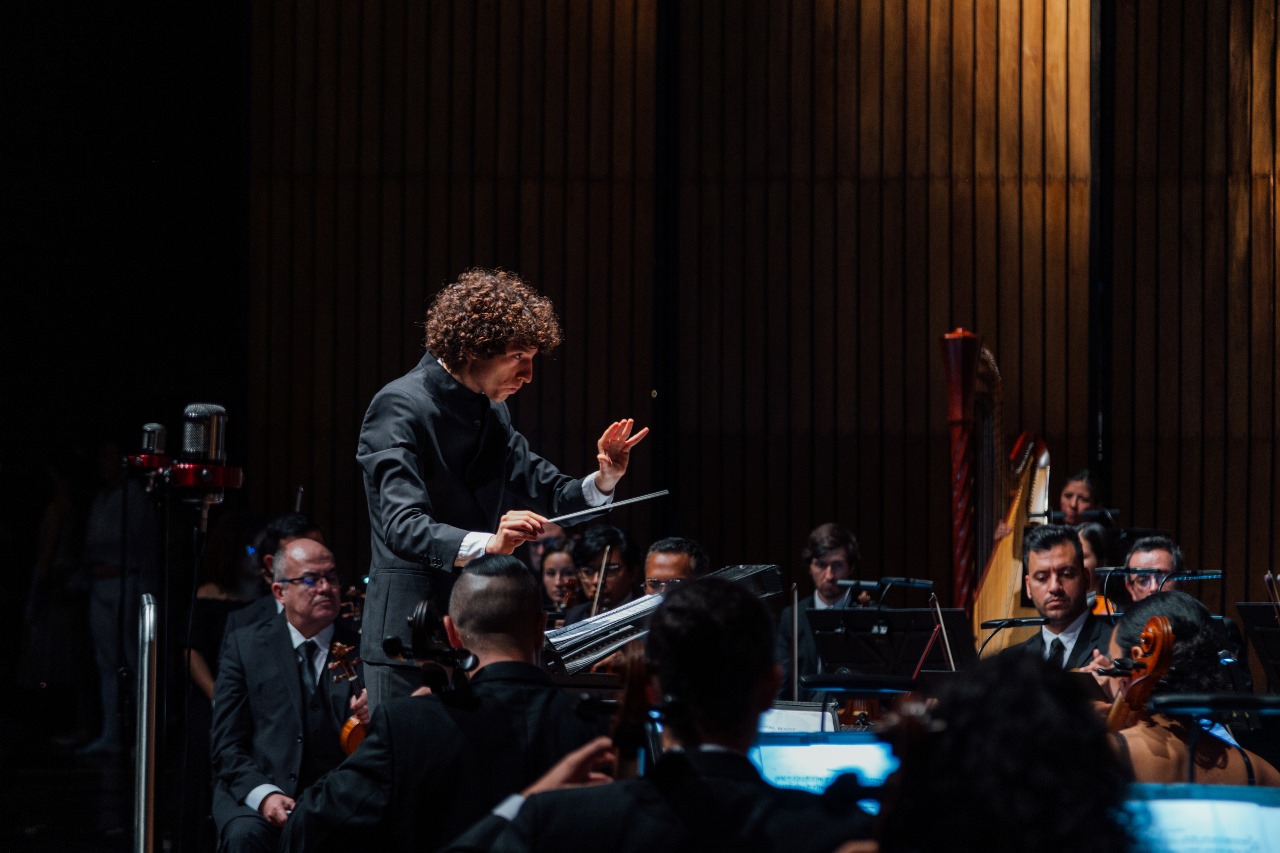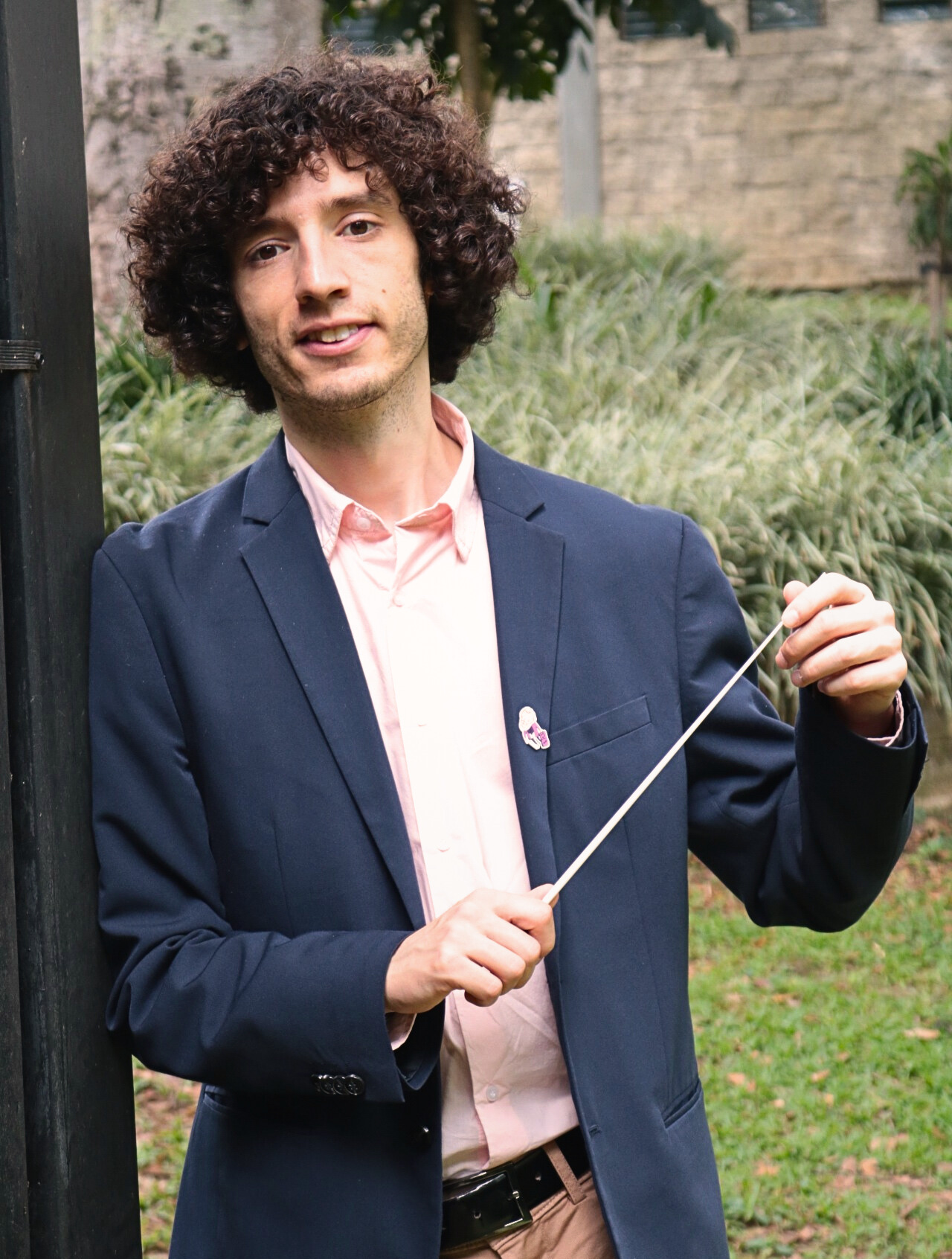Movement is not just rhythm. It is vital impulse, memory, struggle, and transformation.
The next Saturday, July 26 at 6:00 p.m.., we present “Movement and Life” at the Metropolitan Theater, a concert that invites you to feel how music embodies the essence of being human: our capacity to move, remember, and resist through art.
We talked with the teacher Tami Daniel Rueda-White, associate conductor of the Medellín Philharmonic Orchestra, on this profoundly human program. For him, movement in music is not just rhythm or displacement, but an expression of the soul: that which drives us to endure, to remember, to celebrate life even in the midst of adversity. From the colorful folklore of Borodin, passing through the sensitive and deep-rooted gaze of Luis Carlos Figueroa, to the nostalgic intensity of RachmaninovThis concert invites us to connect with the very roots of what makes us alive.
Tami Daniel Rueda-Blanco: Movement, Life, and Other Ways of Saying Who We Are
Filarmed: How do movement and dance interact with the season's "Roots" concept in the works selected for this program?
Tami Rueda-Blanco: Dance has always been one of the most fundamental and primitive forms of expression for our humanity, expressing feelings and moods, and, as time progressed, creating art.
In this program, we'll explore different forms of dance based on diverse traditions and personal experiences. We hope to reconnect with our past and roots, and to look inward in the present to create a better future.
F: In your role as associate director, how have you approached the interpretation of these works that cross such different cultures, generations, and historical contexts?
TR: I think it's important to recognize the different cultural synergies these three works share, and of course, to recognize them in conjunction with the element they all share: dance, or the idea of dance as a form of expression. The Polovtsian Dances are part of a Russian folkloric tradition focused on the East; Luis Carlos Figueroa's Suite for Orchestra is a combination of traditional Colombian music and French symphonic music; and Rachmaninov's Symphonic Dances are charged with a deeply autobiographical and personal feeling.
Q: From your perspective, what do you think Rachmaninov's Symphonic Dances reveal about his exile and his way of looking at Russia from a distance and towards the end of his life?
TR: Despite being forced to emigrate to the United States, escaping the Bolshevik Revolution, Rachmaninov always saw himself as a Russian musician, heir to a rich Russian musical tradition, and his work after that emigration is charged with nostalgia for the Russia he was forced to abandon. In the Symphonic Dances, we find these references with a deeply autobiographical meaning from the composer who looks toward the end of his life, his life experiences, his personal struggles, his yearnings, and his victories.
F: Luis Carlos Figueroa, over a century old, is a living testament to the power of art as a vital force. How is this connection between longevity, creativity, and Colombian roots reflected in his music?
TR: Even though Luis Carlos Figueroa will turn 102 in October, he remains, in active life, one of the pillars of Colombian symphonic and instrumental music, a product of the synergy between our country's musical traditions and the innovations of early 20th-century French orchestral music. This is evident in the melodic simplicity, subtlety, and refinement of his orchestration. Here, even in this work composed 40 years ago, we find a highly experienced composer, capable of expressing many things with few elements.
F: What message does the Medellín Philharmonic hope to convey with a program that combines musical nationalism, personal memory, and vital movement?
TR: The message we want to convey as an orchestra is to reconnect with our past, and what better way to do so than with one of the most fundamental forms of human expression: dance. Through this synergy of personal languages and musical nationalisms, we aim to reconnect with our past as one humanity and invite us to look inward at our present, which is the very reason we study history. By understanding our past, we can see our present and prepare for a better future.
F: What musical elements allow us to perceive the “roots” of each composer in their works, and how does the orchestra translate them into contemporary sound language?
TR: Each work draws on its roots, both cultural and life experience, in personal and innovative ways. In the case of Polovtsian dances, it's the combination of the period's orchestral innovations with a deeply rooted Russian folk and orientalist tradition. And in symphonic dances, it's the expression of these traditions and heritages through a very personal lens, like someone looking back at their past from a distance, toward the end of their life. And in the work of Luis Carlos Figueroa, it's the synergy between the composer's traditions and experiences with Colombian and French music that shaped him throughout his life.
Music in “Movement and Life”
- Polovtsian Dances from “Prince Igor” – A. Borodin
- Suite for orchestra – Luis Carlos Figueroa
- Symphonic Dances Op. 45 – S. Rachmaninoff
Director: Tami Daniel Rueda-Blanco (Colombia)
The concert
Enjoy “Movement and Life” with affordable rates for everyone:
- Tickets from $44,000 for the general public and $25,000* for students.
- Comfama members can access tickets from $9,900.
- Buy yours tickets here or at the following points of sale: CC Los Molinos, CC Fabricato and CC Viva Envigado
- Take advantage of a 25% discount when paying with Bancolombia cards.






